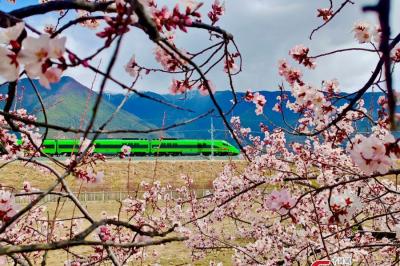| Dec.26, 2019 -- On October 15, 2005, China railway 11th Bureau Group Third Engineering Co., Ltd. laid the rail to Lhasa, the terminus of the Qinghai-Tibet Railway. On June 29, 2015, the whole line of Lhasa-Nyingchi Railway was under construction, and the length of the newly built main line was 403.865 kilometers. Ten years later, the company took on the task of prefabricating, erecting and laying 1814 hole T beam from Xierong Village to Nang County.
Solving altitude sickness problem
"When we first arrived at the project department, we had a hard time eating and drinking, and we didn't sleep well. Serious altitude sickness will also cause pulmonary edema and brain edema. Staff's life safety was seriously threatened," said Liu Jun, party secretary of the project department.
"Survival first, production later". The project department decided to buy large oxygen tanks in Lhasa and place them in the central office area, the living area of labor teams and on the bridge machine, so as to ensure that employees and construction workers can "breathe freely". At the same time, the project department also invited doctors from local hospitals to popularize knowledge about altitude sickness and eliminate their fear.
Laying rails and girders without being afraid of wind and snow
In the process of T beam prefabrication, the project department introduced an intelligent spray maintenance system, and combined with manual maintenance, to solve the problem of beam surface crack due to large temperature difference on the Qinghai-Tibet Plateau. "At the same time, testers also increased the frequency of concrete inspection, monitored the performance of concrete in real time, and optimized the concrete mix ratio in time to ensure the quality of T beam," said Liang Guanghua, chief engineer of the project department.
Lhasa-Nyingchi Railway is a single-line electrified express railway with 120 bridges and 47 tunnels. The bridge to tunnel ratio is up to 75%. As a result of narrow operating surface, a variety of cross construction operations, dense long tunnel groups, poor communication signal, and high ratio of bridge to tunnel, the project department formulated and issued the safety management system and the engineering signature confirmation system, as well as introduced the domestic advanced scheduling information management system, so as to ensure the construction safety. "The scheduling information system we introduced solved the problem of locomotive positioning and tracking in long tunnel groups for the first time, monitored the construction situation in real time, and ensured the safety management of project line," said Li Xianjun, director of project management office.
Building a harmonious relationship between company and local people
At the construction site of Lhasa-Nyingchi Railway, it can be seen everywhere that Tibetan people are busy.
Dekyi is a typical example. She is an ordinary people in Xierong Village, Quxu County, Lhasa City. A few years ago, Dekyi and her husband moved to Lhasa, more than 50 kilometers from their home, to get more income.
"Working outside, the income is not high and our two children can not see us often," Dekyi said, "however, it's different now. Railway is built nearby the village. Not far from home is where I work. After work, I can still do some housework.”
Dekyi, who speaks fluent Mandarin because of her work and diligence, now leads a working team of 20 local farmers and herdsmen. She is the communication bridge between the project department and the local people.
"Before, we could only do simple work such as digging stones and filling sand. Now, through learning, we gradually get involved in more technical processes such as track renovation and T beam prefabrication," said Dekyi confidently.
The beam making farms of Quxu County and Nang County have recruited 25 local people. According to position situation, their monthly salary is between 5,000 and 7,000 yuan RMB. The income of local people involved in the project is greatly increased.
By: Liu Fang, Zhi Xinghua |
- Home
- News Tibet |Exclusive |China |World |Related News |Latest
- Documents White Papers |Others
- Photo Politics |Economy & Society |Culture & Religion |Human & Nature |Beautiful Tibet |Other Tibetan-Inhabited Area |Exchanges |Related
- Video News |Documentary |Micro-Video |Entertainment
- Art
- Tourism
- In Focus
- About Tibet






